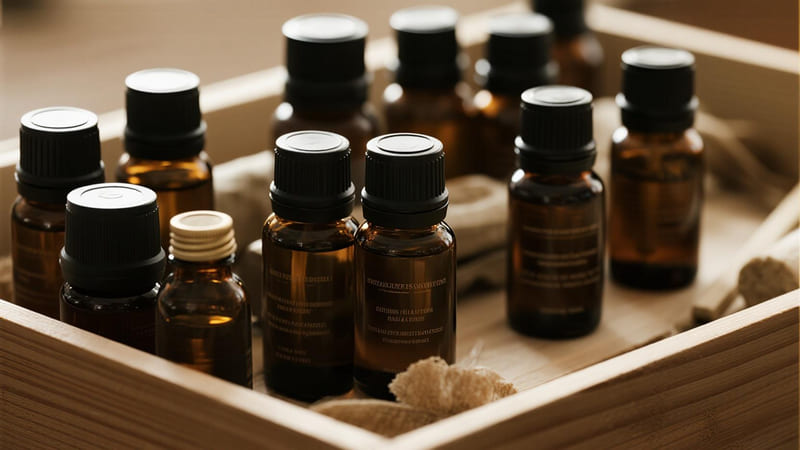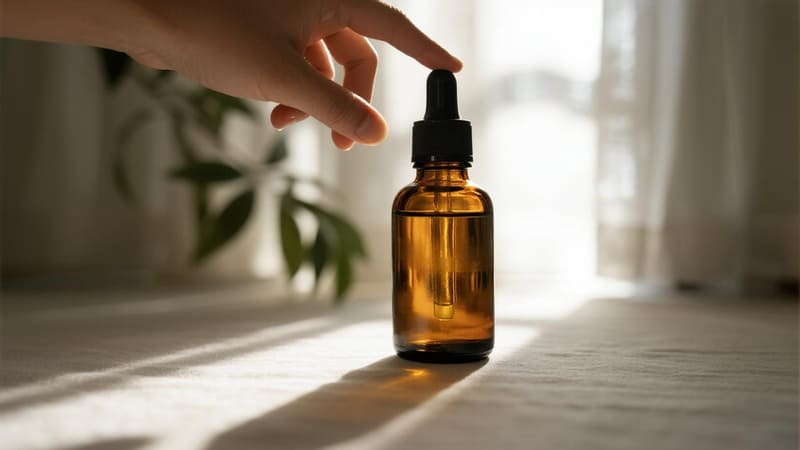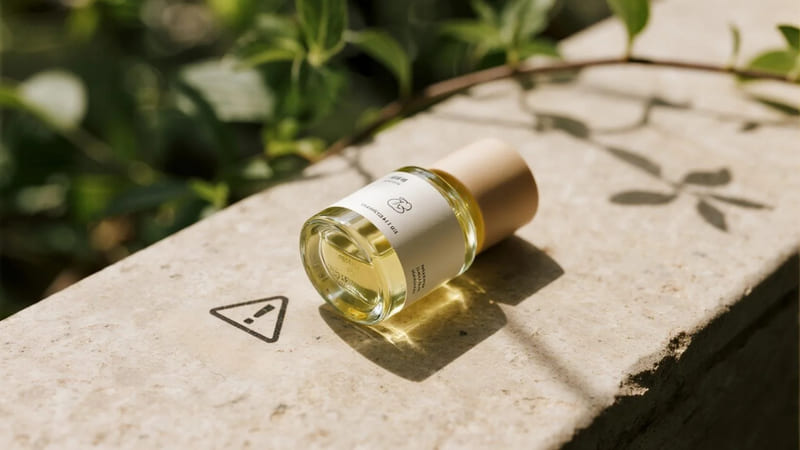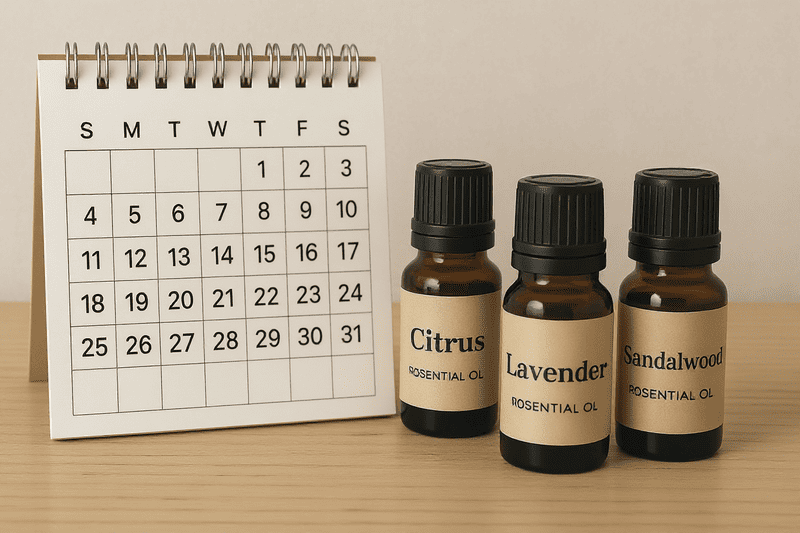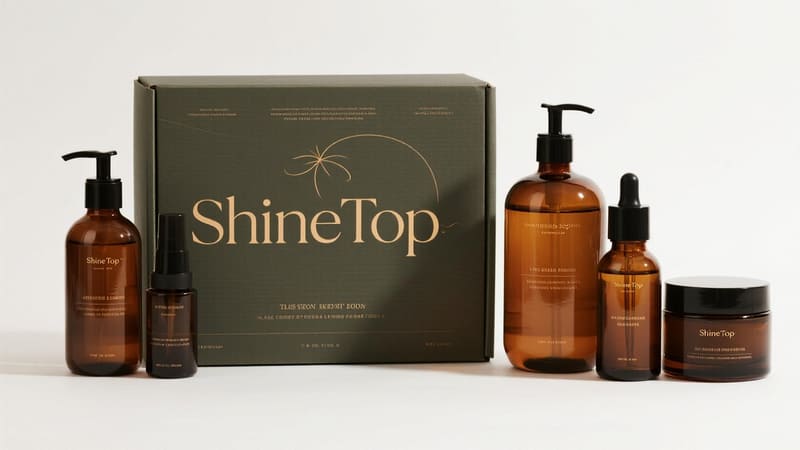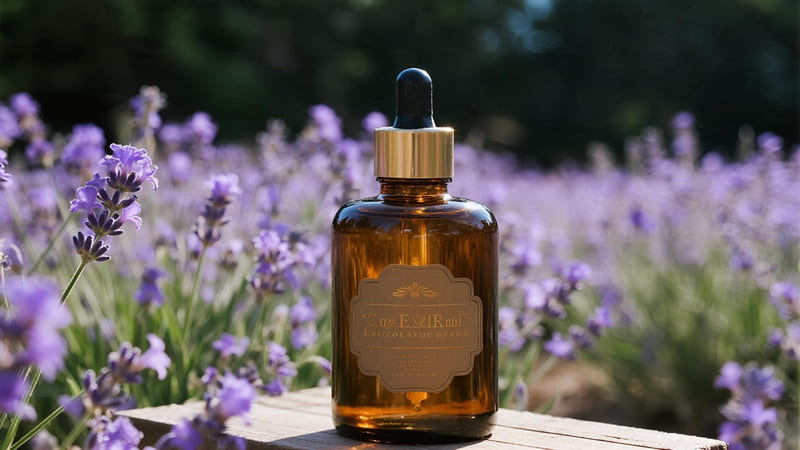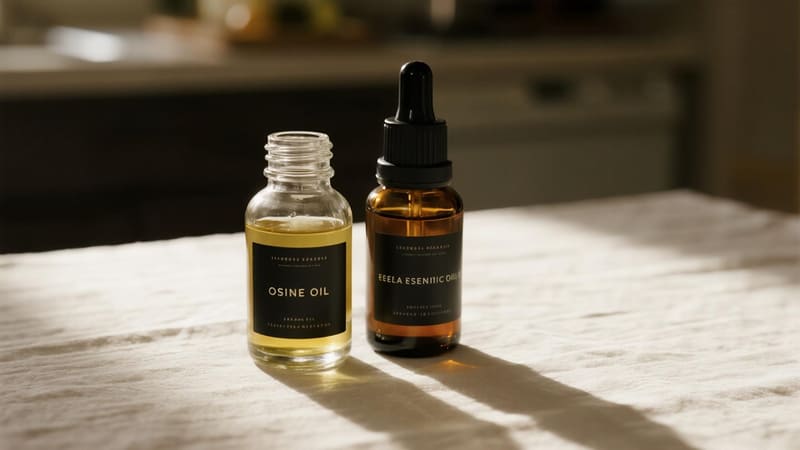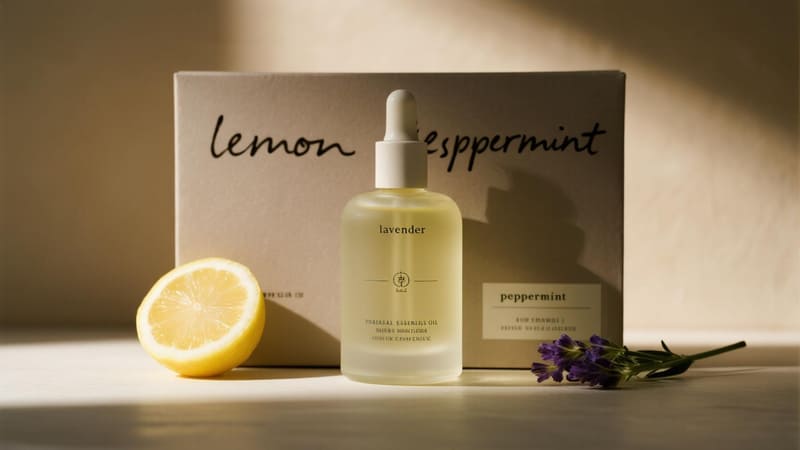Your essential oils are a valuable investment, but storing them incorrectly can ruin them. You lose money and the therapeutic benefits you bought them for. I’ll show you how to protect them.
The best way to store essential oils is in dark-colored glass bottles, like amber or cobalt blue, with the caps screwed on tightly. Keep them in a cool, dark place with a stable temperature, away from direct sunlight and heat sources like a windowsill or stove.
So, you have the basic rules: dark glass, cool place, tight cap. But understanding why these rules are so important is the key to truly protecting your oils. The enemies of your essential oils are light, heat, and oxygen. Let’s break down exactly how each of these can damage your oils and what you can do to stop it, ensuring every drop stays as potent as the day you bought it.
Why do essential oils need to be stored in dark glass bottles?
You see your oils in pretty clear or plastic bottles and think it’s fine. But light and plastic are silent killers of essential oils, degrading them until they are useless or even harmful.
Dark glass bottles, specifically amber or cobalt blue, are essential because they block damaging ultraviolet (UV) light. UV rays trigger oxidation, a chemical reaction that breaks down the oil’s compounds. This ruins its therapeutic properties, changes its scent, and shortens its shelf life significantly.
As a packaging manufacturer, this is a topic I discuss with my clients every single day. Light protection is non-negotiable for potent formulas. When my client Anna develops a new cosmetic serum with delicate essential oils, we always use our amber or frosted glass bottles. It’s not just for looks; it’s a critical part of ensuring the product remains effective and safe for her customers. Glass is also vital because potent essential oils can actually dissolve certain types of plastic over time, leaching unwanted chemicals into your pure oil. While high-quality PET plastic can be used for diluted products, for pure essential oils, glass is always the superior choice.
| Material | UV Protection | Chemical Stability | Best For |
|---|---|---|---|
| Amber Glass | Excellent | Inert (No Reaction) | Long-term storage of pure oils |
| Cobalt Glass | Excellent | Inert (No Reaction) | Long-term storage of pure oils |
| Clear Glass | Poor | Inert (No Reaction) | Not recommended for storage |
| Plastic (PET) | Poor | Low Risk | Short-term use, highly diluted products only |
Does heat really affect essential oils?
You left your oils in a hot car or on a sunny windowsill. It seems harmless, but heat is rapidly destroying your expensive oils, making them smell bad and lose all their power.
Yes, heat is one of the biggest enemies of essential oils. It dramatically speeds up the rate of oxidation and causes the most volatile (lightest) aromatic compounds to evaporate. This permanently changes the oil’s chemical balance and scent, ruining its quality and therapeutic benefits.
Think of your essential oil as a complex musical chord. Heat makes the highest, lightest notes fly away first. What you’re left with is a dull, flat, and unbalanced scent. The ideal storage temperature is a stable, cool room temperature, around 65-70°F (18-21°C). The worst place for your oils is a bathroom cabinet, where the temperature and humidity fluctuate wildly with every shower. A wooden box in a bedroom closet is a much better choice. For some oils, especially precious ones or citrus oils that degrade quickly, the refrigerator can be a great option to extend their life. Just be aware that some thicker oils may solidify in the cold. If this happens, simply let the bottle return to room temperature before using it.
| Storage Location | Temperature | Light Exposure | Rating |
|---|---|---|---|
| Sunny Windowsill | High, Fluctuating | High | Very Poor |
| Bathroom Cabinet | Fluctuating, Humid | Dark | Poor |
| Car Glove Compartment | Extreme Fluctuations | Dark | Very Poor |
| Wooden Box in a Closet | Stable, Cool | Dark | Excellent |
| Refrigerator | Stable, Cold | Dark | Good |
How long do essential oils last once opened?
You have a growing collection of oils but no idea if they’re still good. Using an expired oil is not just ineffective; it can cause skin irritation or other reactions.
The shelf life of an essential oil depends on its chemical family. Light citrus oils last about 1-2 years. Most floral and herbal oils last 2-5 years. Heavy, rich base oils like sandalwood, patchouli, and vetiver can last 6-10 years or even improve with age.
This variation in shelf life is all down to chemistry. The smaller, lighter molecules found in citrus oils (like limonene) are very reactive and oxidize quickly. The larger, heavier molecules found in woods and resins (like sesquiterpenes) are much more stable. The best practice is to write the date you opened the bottle on the label. But how can you tell if an oil has gone bad? Trust your senses. The most obvious sign is the smell. It will lose its bright, characteristic aroma and may smell dull or sour. The oil might also appear cloudy or thicker than you remember. If you’re unsure, never use it directly on your skin.
| Oil Family | Typical Shelf Life | Examples |
|---|---|---|
| Citrus | 1–2 Years | Lemon, Bergamot, Grapefruit, Orange |
| Floral | 2–5 Years | Lavender, Chamomile, Geranium, Ylang-Ylang |
| Herbal / Grassy | 2–4 Years | Peppermint, Rosemary, Tea Tree, Eucalyptus |
| Woodsy / Earthy | 4–8 Years | Cedarwood, Frankincense, Cypress, Vetiver |
| Resins / Roots | 6–10+ Years | Sandalwood, Patchouli, Myrrh, Ginger |
Conclusion
Store your oils in dark glass bottles with tight caps. Keep them in a cool, dark place. Following these simple rules protects your investment and ensures your oils remain safe and effective.

